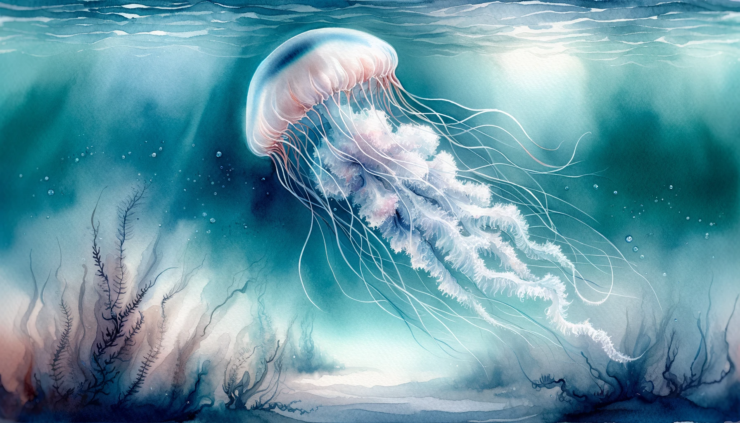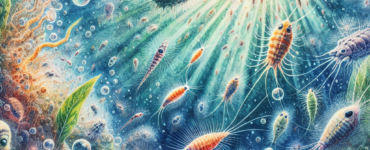Have you ever wondered if immortality exists in the natural world? Meet Turritopsis dohrnii, a remarkable creature that never dies.
Unlike other jellyfish, this extraordinary creature can revert to its juvenile polyp stage after attaining sexual maturity, a process it can undergo repeatedly. This astounding ability has aptly earned it the nickname immortal jellyfish.
Let’s dive into the fascinating world of this unique marine marvel and explore how it challenges our understanding of aging and life itself.
Here are some fascinating details about this species:
- Size and Appearance: Turritopsis dohrnii is quite small, typically only about 4 to 5 millimeters in diameter. It has a bell-shaped, transparent body with as many as 90 tentacles when fully grown.((https://www.nhm.ac.uk/discover/immortal-jellyfish-secret-to-cheating-death.html))
- Life Cycle: The life cycle of Turritopsis dohrnii includes several stages. It begins as a larva, develops into a free-swimming planula, attaches to a surface, and turns into a polyp. The polyp eventually buds off young jellyfish (medusae). Its remarkable ability to revert from the medusa stage to the polyp stage under stress conditions such as starvation, physical damage, or temperature changes is remarkable.((https://www.bbcearth.com/news/the-jellyfish-that-never-dies))
- Process of Reverting: This transformation involves the process of transdifferentiation, where its cells can change type. For example, a mature cell might change from a muscle to a nerve cell or even revert to a stem cell-like state. This ability to essentially “reset” its life cycle is what grants it the status of being “immortal.”((https://www.ncbi.nlm.nih.gov/pmc/articles/PMC2633984/))
- Habitat: Originally found in the Mediterranean Sea, this species has now spread to many ocean waters worldwide with the help of ships, where they frequently take a ride in the ballast waters.((https://a-z-animals.com/animals/immortal-jellyfish/))
- Diet: The immortal jellyfish feeds on plankton, including small mollusks, fish eggs, and larvae.((https://allanimalfacts.com/immortal-jellyfish/#Immortal_Jellyfish_Diet))
- Reproduction: Besides its unique ability to revert to a juvenile state, Turritopsis dohrnii also reproduces the traditional way. They are capable of both sexual reproduction in the medusa stage and asexual reproduction in the polyp stage.((https://www.nationalgeographic.com/animals/article/immortal-jellyfish-swarm-oceans-animals))
- Impact on Research: This jellyfish has garnered significant interest in the scientific community, particularly in aging and regenerative medicine research. By studying its unique regenerative process, scientists hope to uncover new insights into the mechanisms of aging and potential strategies for human medical applications.((https://www.pnas.org/doi/full/10.1073/pnas.2118763119)),((https://www.smithsonianmag.com/smart-news/immortal-jellyfish-could-spur-discoveries-about-human-aging-180980702/))
- Conservation Status: Despite its incredible survival mechanism, the actual population size and conservation status of Turritopsis dohrnii are not well documented, partly due to its small size and widespread distribution.
- Predation and Lifespan: While theoretically immortal in terms of aging, these jellyfish are not immune to death. They are vulnerable to diseases, harsh environmental conditions, and predation by larger marine animals.((https://www.science.org.au/curious/earth-environment/animals-can-live-forever))
This tiny jellyfish’s ability to cheat death and revert to a younger state presents a remarkable example of biological adaptation and resilience, offering profound implications for our understanding of life and aging.






































Add comment